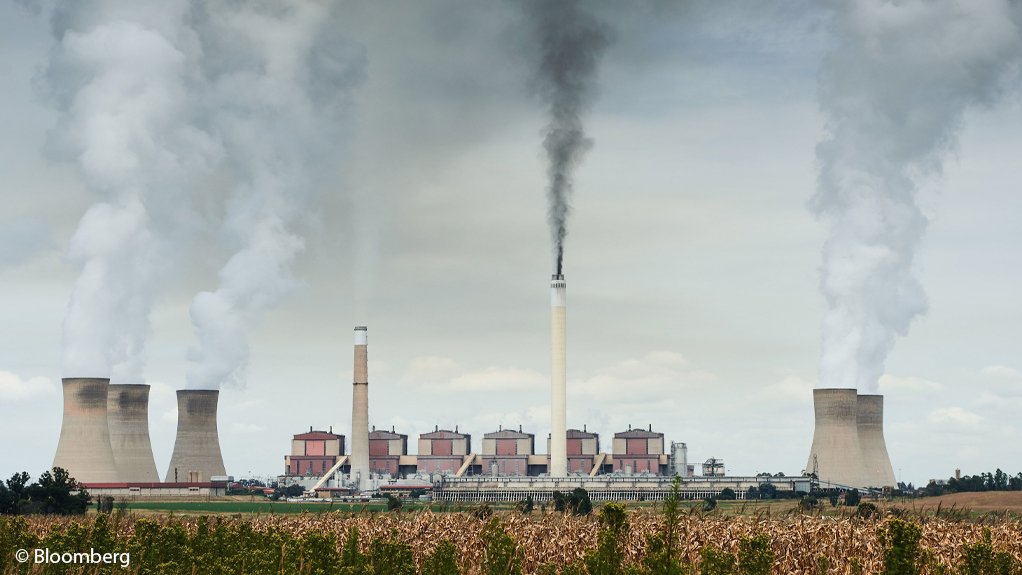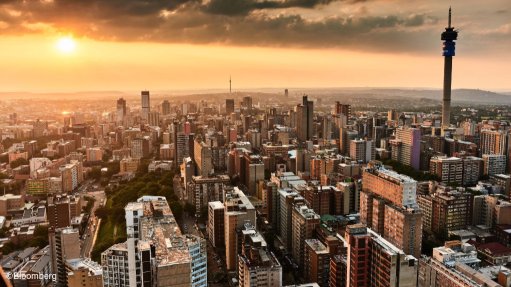Eskom soot pollution is at a 31-year-high, 42 times worse than China


Particulate matter is soot generated while burning coal and emitted through the plants’ stacks or chimneys
Photo by Bloomberg
Coal-fired power plants operated by South Africa’s state utility are emitting pollutants that primarily cause respiratory diseases such as asthma at almost 42 times the intensity of those in China.
Eskom Holdings, in the second week of December, said in the six months through September, particulate matter emissions deteriorated to 0.92 kg per MWh sent out – the highest since 1992, according to the utility.
That compares with an average of 0.022 kg/MWh for Chinese power plants, according to government figures. China is the world’s biggest producer of power from coal.
The rising emissions, which more than doubled in intensity from 2022, are another sign of Eskom’s deteriorating performance. The indebted company is battling to keep its aging plants running after years of inadequate maintenance and investment amid a slew of corruption scandals. The result has been almost daily power cuts that are holding back South Africa’s economic growth and it’s also slowing the repairs needed to curb pollution.
“The fact that we’ve got a constrained system does contribute to how quickly we can take it down and how quickly we can do the repairs” to the pollution abatement equipment, said Eskom environmental manager Deidre Herbst in an interview.
Particulate matter is soot generated while burning coal and emitted through the plants’ stacks or chimneys, that’s small enough to get deep into the lungs and even the bloodstream. In addition to asthma and other respiratory complaints, it’s been linked to premature death of people with heart or lung disease.
Eskom has estimated that its pollution, which includes other harmful emissions such as sulfur dioxide, leads to 330 premature deaths a year. Independent studies have indicated a far higher number of fatalities.
Eskom, in a response to queries, blamed the deterioration on “challenges” and technical issues with a range of pollution abatement equipment at the plants. Those include electrostatic precipitators, which use an electric charge to get the dust to stick to a plate rather than being emitted into the atmosphere, as well as fabric filter bags, which collect the soot.
Measures being taken to cut the pollution include the refurbishment of the precipitators, Eskom said.
“This program is progressing well,” Eskom said, adding that the pollution levels have now fallen to 0.65 kg/MWh.
That’s still almost as high as in the year to March, when it was 0.70 kg/MWh, and well above the low point of the past 25 years when Eskom emitted 0.20 kg/MWh in the 12 months through March 2007.
The worst performing power plants were Kendal, which produced 2.39 kg/MWh of particulate in the period to September, and Matla at 2.49 kg/MWh.
10 Tonnes
That would mean Kendal spewing almost 10 tonnes of soot into the atmosphere every hour during the first half of the financial year, when operating at full capacity. The utility said there have been improvements at both plants since the end of September due to interventions.
Eskom’s average emissions equated to about three times the South African limit, although many of its plants have applied for and got exemptions. South Africa’s emission limits are considerably more lenient than those in China and India, two countries that have historically had high emission levels from coal-fired plants.
Those limits have been deemed too high by South African scientists who in studies commissioned by the government said they were harming the health of children living near the power plants. The environment department, which Eskom said has visited plants exceeding emission limits, didn’t respond to a request for comment.
In China, by contrast, emissions have fallen to current levels from 0.39 kg/MWh a decade ago as its government clamped down on pollution.
Article Enquiry
Email Article
Save Article
Feedback
To advertise email advertising@creamermedia.co.za or click here
Comments
Press Office
Announcements
What's On
Subscribe to improve your user experience...
Option 1 (equivalent of R125 a month):
Receive a weekly copy of Creamer Media's Engineering News & Mining Weekly magazine
(print copy for those in South Africa and e-magazine for those outside of South Africa)
Receive daily email newsletters
Access to full search results
Access archive of magazine back copies
Access to Projects in Progress
Access to ONE Research Report of your choice in PDF format
Option 2 (equivalent of R375 a month):
All benefits from Option 1
PLUS
Access to Creamer Media's Research Channel Africa for ALL Research Reports, in PDF format, on various industrial and mining sectors
including Electricity; Water; Energy Transition; Hydrogen; Roads, Rail and Ports; Coal; Gold; Platinum; Battery Metals; etc.
Already a subscriber?
Forgotten your password?
Receive weekly copy of Creamer Media's Engineering News & Mining Weekly magazine (print copy for those in South Africa and e-magazine for those outside of South Africa)
➕
Recieve daily email newsletters
➕
Access to full search results
➕
Access archive of magazine back copies
➕
Access to Projects in Progress
➕
Access to ONE Research Report of your choice in PDF format
RESEARCH CHANNEL AFRICA
R4500 (equivalent of R375 a month)
SUBSCRIBEAll benefits from Option 1
➕
Access to Creamer Media's Research Channel Africa for ALL Research Reports on various industrial and mining sectors, in PDF format, including on:
Electricity
➕
Water
➕
Energy Transition
➕
Hydrogen
➕
Roads, Rail and Ports
➕
Coal
➕
Gold
➕
Platinum
➕
Battery Metals
➕
etc.
Receive all benefits from Option 1 or Option 2 delivered to numerous people at your company
➕
Multiple User names and Passwords for simultaneous log-ins
➕
Intranet integration access to all in your organisation

















